Abstract: We take a second look at Ordinal related data on Bitcoin. We note that by transaction count, BRC-20 tokens are the dominant form of Ordinals, with 92.5 million BRC-20 transactions compared to only 2.7 million onchain Ordinal images. However, when it comes to the amount of data, image related Ordinals are approximately the same size as the BRC-20 Ordinals, at around 30GB. We explain that from a node runner’s perspective, the smaller BRC-20 related transactions, which have a structure reasonably similar to “ordinary transactions” are a significant negative. In contrast, image related Ordinals are larger in size and contain more “arbitrary data”, this has a positive to neutral impact on a node’s resources. Therefore, the BRC-20 tokens may be more of a concern to some node runners.
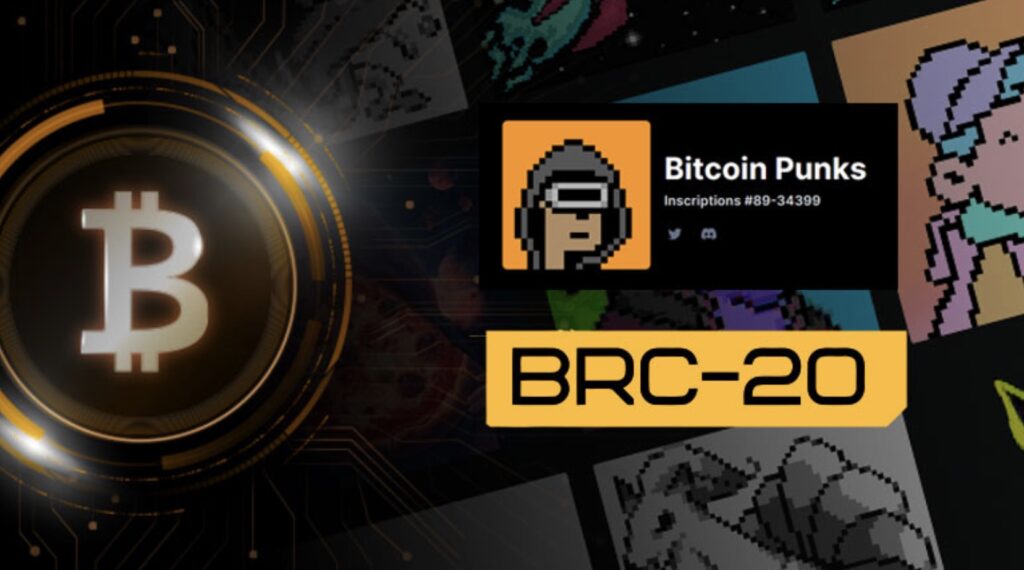
Overview
In February 2023, when the so-called Ordinals boom was just getting underway, we analysed the blockchain to produce our first report on this topic. In this piece, we take a second look at Ordinal related data on Bitcoin’s blockchain and in particular we evaluate the impact this data has on the resources required to run a full Bitcoin node.
Ordinal Data Overview by Type
Since the Ordinal craze started, there have been around 97.4 million inscriptions on the Bitcoin blockchain. Of these, the overwhelming majority, by count, have been related to BRC-20 tokens, either token mints or token transfers. By contrast, there have been around 2.7 million images inscribed to the Bitcoin blockchain, as the below table illustrates.
| Type | Count |
| BRC-20 | 92,514,620 |
| Image | 2,710,087 |
| Other | 2,048,399 |
| Video | 100,321 |
| Audio | 1,525 |
| 634 | |
| Total | 97,375,586 |
Source: https://dune.com/dgtl_assets/bitcoin-ordinals-analysis
Total Inscriptions To Date – By Count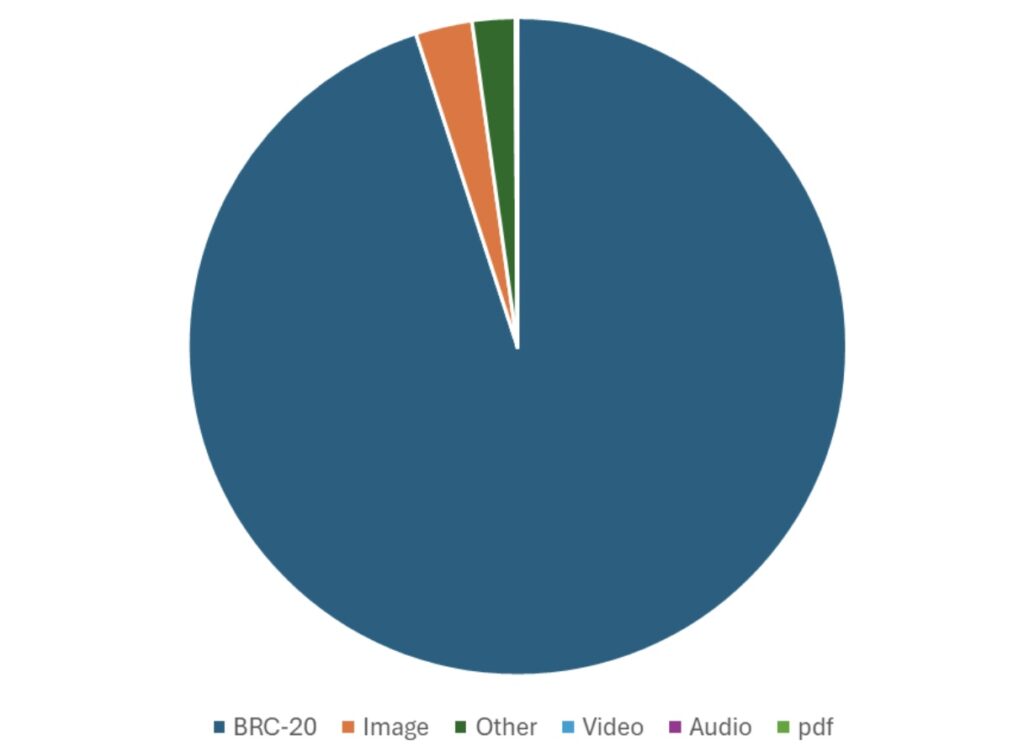
Source: https://dune.com/dgtl_assets/bitcoin-ordinals-analysis
While BRC-20 is dominant with regards to the number of Ordinals related transactions, when it comes to the data used, the story is more mixed. In raw bytes, Ordinal images and other data take up around 30.0GB of blockchain space. This is slightly more than 27.8GB of data taken up by BRC-20 related transactions. Therefore, when it comes to raw data, the impact of images is around the same as that of BRC-20 tokens. In terms of blockweight, images benefit from the witness discount, so they take up 8.9 billion weight units, significantly less than the BRC-20 tokens, which have used up 13.9 billion weight units to date.
| Data Size (MB) | Virtual Bytes (M) | Fees (BTC) | Average Feerate (Sat/vB) | |
| BRC-20 tokens | 27,813 | 13,912 | 5,072 | 36.5 |
| Images & other | 29,957 | 8,935 | 2,012 | 22.5 |
| Non Ordinal transactions | 183,942 | 119,016 | 33,236 | 27.9 |
| Total | 241,712 | 141,863 | 40,321 | 28.4 |
Source: BitMEX Research. Notes: Data from Dec 2022 to Sept 2025
Node Running Costs – The Theory
In terms of node running costs, in theory, large Ordinal images should be easier to verify than ordinary transactions for each unit of block weight. This is because the images are inscribed in a non-executed part of the Taproot witness. Therefore, there are no signatures to verify, which computationally is perhaps the most significant part of running a node. Ordinal images are also beneficial to scaling in other ways, as the data hungry images take up blockspace which could otherwise be used to increase the UTXO set. Therefore, in general, arbitrary non-transaction related data can be a positive, when looked at purely from the point of view of the resources it takes to validate the blockchain.
In contrast, the BRC-20 related transactions have characteristics more similar to ordinary non-Ordinal related Bitcoin transactions. The BRC-20 transactions are smaller in size and have less arbitrary non-transaction related data, therefore from a node runner’s perspective, they should be around the same as ordinary transactions with respect to node resources required for validation. However, the key problem with BRC-20 tokens, from a scaling perspective, is they seem to bloat the UTXO set. As a result largely of BRC-20 tokens, the UTXO set has increased from 84 million to 169 million, in the Ordinal period from December 2022 to September 2025. This is an increase of around 85 million outputs. The size of the UTXO set is a key metric for node runners, especially pruned nodes and therefore the existence of BRC-20 tokens is materially detrimental for those operating nodes. Nevertheless, transaction outputs do not benefit from the witness discount and therefore BRC-20 token related transactions have paid a higher rate per byte for this block space. BRC-20 transactions have paid over 5,000 Bitcoin in transaction fees, since the BRC-20 protocol was invented.
UTXO Set Size
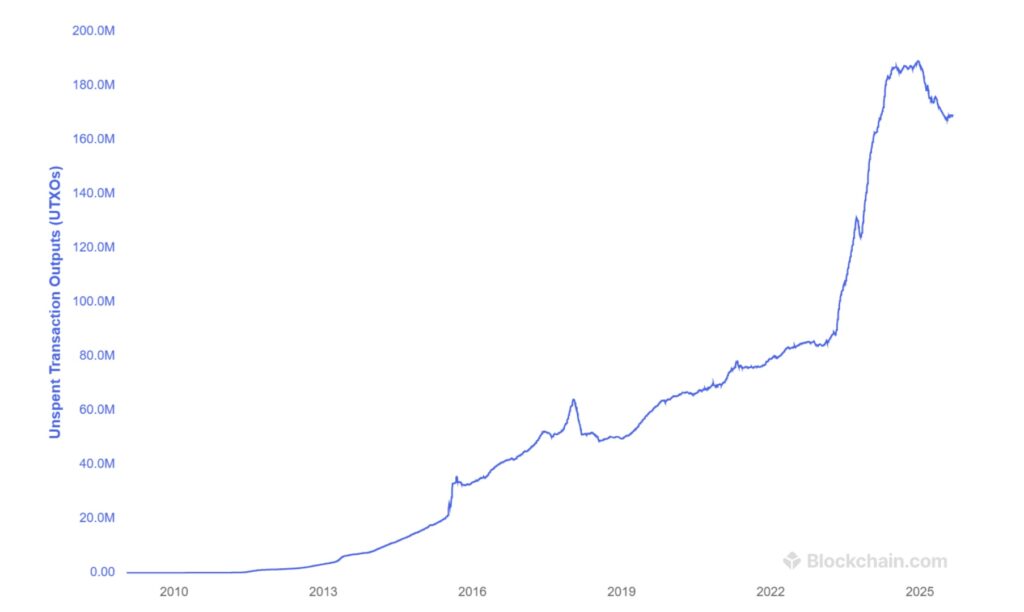
Source: https://www.blockchain.com/explorer/charts/utxo-count
Node Validation Results
We ran several tests, conducting an initial blockchain download. We used a computer running Ubuntu, with 8 CPU cores and 8GB of ram. The machine had a 1TB solid state drive and a 1Gb/s internet connection. One potential criticism of our analysis is that this connection speed was too fast and that nodes at home may have a slower network connection, which could make it take longer to download large Ordinals. The test was conducted with Bitcoin Core version 29.1. The aim of the performance test was to assess how fast the node would download and verify the blocks and to regress these speeds against the amount of Ordinal related data in each block. In the below charts, each point represents one day. The x-axis coordinate represents the number of blocks verified per second in each day. The y-axis coordinate represents the average amount of ordinals related data per block in each day or the average size of each Ordinal for each day.
Results with assume valid = 1 (Skipping signature verifications)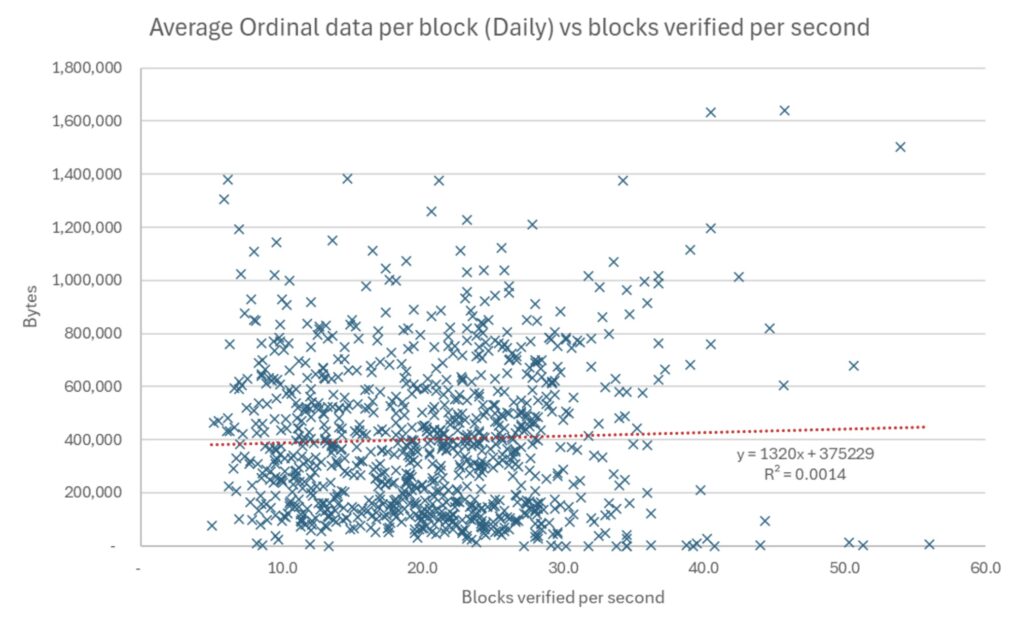
Source: BitMEX Research. Notes: Data from Dec 2022 to Sept 2025, a period of 959 days
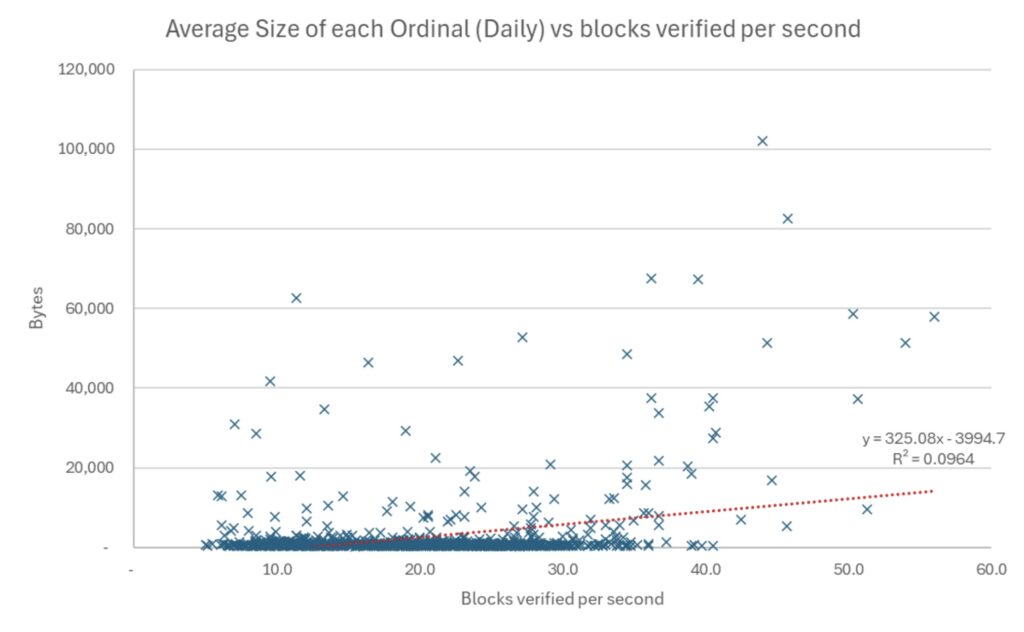
Source: BitMEX Research. Notes: Data from Dec 2022 to Sept 2025, a period of 959 days
Results with assume valid = 0 (Conducting all the signature verifications)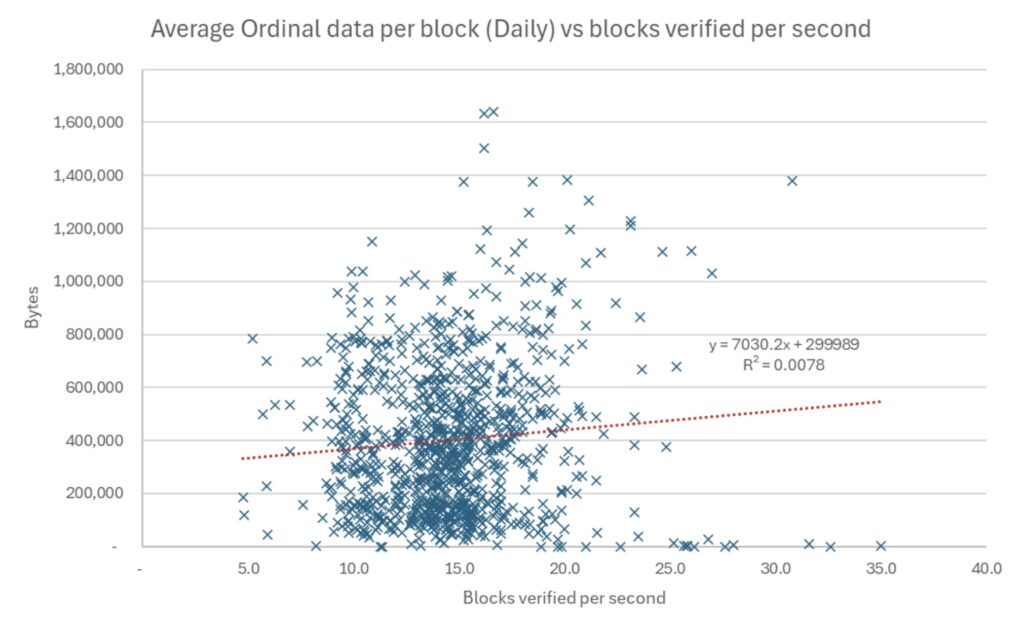
Source: BitMEX Research. Notes: Data from Dec 2022 to Sept 2025, a period of 959 days
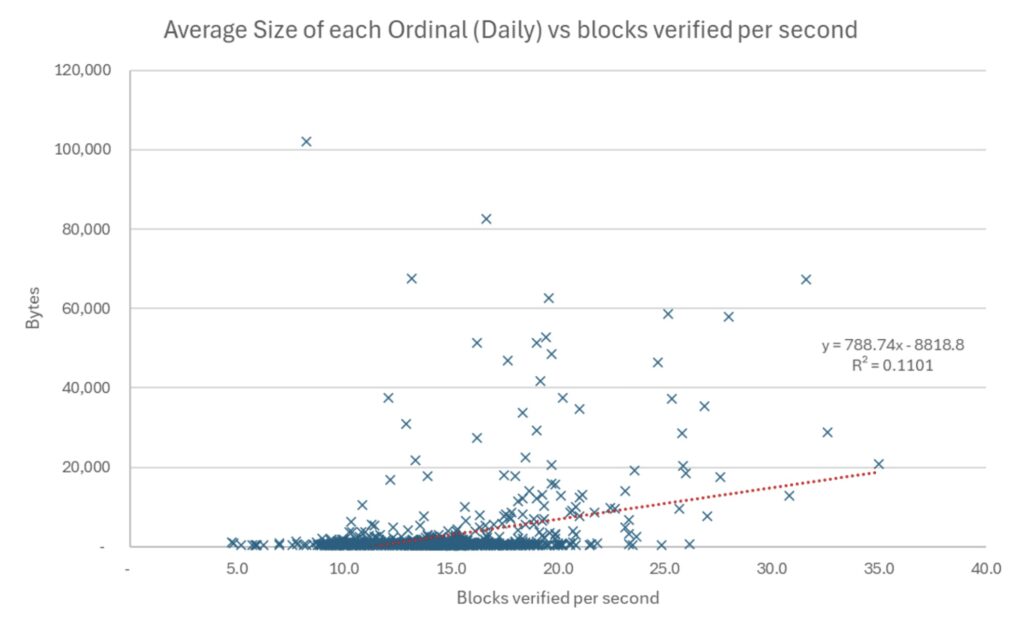
Source: BitMEX Research. Notes: Data from Dec 2022 to Sept 2025, a period of 959 days
The results are reasonably inconclusive, however each regression showed a positive relationship between the amount of Ordinal data and verification speed. There is always going to be a lot of randomness when it comes to downloading data on a peer to peer network over the internet, therefore perhaps it’s understandable the results are reasonably weak. Random issues in the disk could also cause variations in speed. One should therefore be somewhat sceptical of these results and we are publishing this in the hope others repeat or improve this experiment.
A key part of the theoretical reasoning, why more Ordinal data should speed up verification is the assumption that blocks are always full. If arbitrary data displaces transactional data, then this should speed up verification. However, blocks are mostly full but they are not always 100% full. Non-full blocks mean that more arbitrary data slows down block verification. Therefore, in this period, Dec 2022 to Sept 2025, perhaps these two factors play off against each other to some extent. This effect may be noticeable when assume valid is turned on, where the Ordinal data per block has an R squared relationship with verification speed of just 0.1%. Therefore, there is essentially no evidence of a relationship here.
There is some logic to the results, in that with assume valid switched off, the positive relationship between Ordinal size and verification speed increases. Assume valid being switched off is probably the best way to test this, because once your node is synced to the tip, it does check the signatures and this is the state of most nodes. The strongest R value in the test is 11%, when assume valid is switched off and when we are comparing verification speed to the average Ordinal size. The daily data may indicate that block verification gets faster as the average Ordinal size increases and that 11% of the variance in verification time can be explained by larger Ordinals.
Conclusion
The above analysis does not imply that large Ordinal related images are a good thing or positive for Bitcoin. These images could have a negative long term effects on the system, as they may price out financial transactions, which could have all kinds of negative consequences. All the data in this report may show is that the large Ordinal images may have a small side benefit, partially offsetting the potential negatives, which is that more arbitrary data on the chain, if done well, might make it slightly easier to run a node in practice.
The post Ordinals – Impact On Node Runners appeared first on BitMEX Blog.
Also read: Factblock CEO: Crypto Culture and Cutting-Edge Tech Make Korea a Web3 Testbed